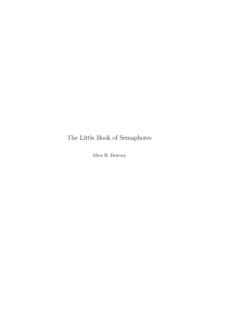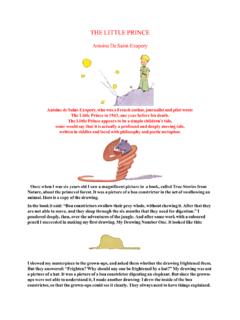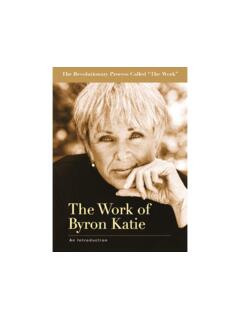Transcription of The Little Book of Profiling - UMTRI
1 The Little book ofProfilingBasic Information about Measuring and InterpretingRoad ProfilesSeptember 1998 Michael W. SayersSteven M. Karamihas Copyright 1998 The Regent of the University of MichiganAll Rights 1 What Is a Profile?.. 2 What Is a Profiler?.. 3 What Can You Do With Profiles? .. 9 What is a Valid Profiler?.. 10 When Is a Profiler Not Valid?.. 12 What Is Signal Processing?
2 12 What Is Sample Interval?.. 13 What Is Filtering? .. 16 What Is a Moving Average?.. 18 What Are Sinusoids?.. 21 What Is Frequency Response?
3 23 What Is a Power Spectral Density?.. 26 What is Vehicle Ride?.. 30 How Is Vertical Acceleration Related to Profile?.. 32 How Does Ride Relate to the Road?.. 35 What Is Road Roughness?.. 37 What Are Response-Type Systems?
4 39 What Are the Frequency Responses of Roughness Measuring Devices?.. 41 What Is a Profile Index?.. 43 What Is the IRI?.. 45 What Are Panel Ratings?.. 52 What Is Ride Number?.. 55 What Other Roughness Indices Are In Use?
5 60 What Is the Effect of Length?.. 67 What Is Verification Testing?.. 70 What Is Calibration?.. 72 What Is Correlation?.. 73 What Are Errors?.. 79 What Causes Profiling Error?
6 81 What Is The Effect of Speed?.. 86 What Is the Effect of Texture?.. 90 What About Cracks?.. 92 How Accurate Should a Profile Be?.. 94 What Is a Class 1 Profiler?
7 98 Revision: September 18, 1998 Page 1 IntroductionHigh-speed road Profiling is a technology that began in the 1960 s when ElsonSpangler and William Kelly developed the inertial profilometer at the General MotorsResearch Laboratory. Some users still call high-speed profilers by their early name:GMR the past decade, Profiling instruments have become the everyday tools formeasuring road roughness.
8 The majority of States now own road profilers. Asubstantial body of knowledge exists for the field of profiler design and are also many proven methods for analyzing and interpreting data similar to themeasures obtained from profilers. However, there has not been a single source ofinformation about what you can do with a profiler. Users have instructions providedby the manufacturers to operate the equipment, but Little else to go profiler users from different States met in 1989 and formed the RoadProfiler User Group (RPUG). RPUG has been meeting annually since then toprovide a forum for issues involving the measurement and interpretation of roadprofiles.
9 From 1992 to 1995, the authors conducted a research project at TheUniversity of Michigan Transportation Research Institute ( UMTRI ) called Interpretation of Road Roughness Profile Data. The research was funded by theFederal Highway Administration (FHWA) and pooled State funds. At the 1994 RPUG meeting, representatives of the participating States suggested that a shortcourse is needed to provide the necessary education. Dave Huft, inventor of theSouth Dakota profiler, proposed a Little Golden book of Profiling in the spirit ofthe popular children s National Highway Institute (NHI) of FHWA provided funding for theauthors to prepare a short course called Measuring and Interpreting Road Profiles.
10 The first session of the course was held in November 1995 in Ann Arbor, Little book was written for the course. The book was revised and extended inSeptember 1996 for the second session of the course, scheduled to coincide with the1996 RPUG meeting in Denver. A third session was held in October 1997 inOverland Park, Kansas, in conjunction with the 1997 RPUG The Little book , we try to cover three basic questions:1 . How do profilers work?2 . What can you do with their measurements?3 . What can you do to reduce errors?The material is targeted at users. Our intent is make the material no more technicalthan is needed to describe what the measures mean that you can get from a : September 18, 1998 Page 2 What Is a Profile?










